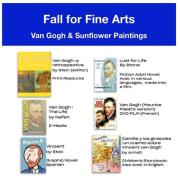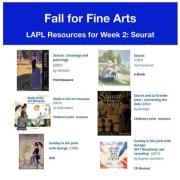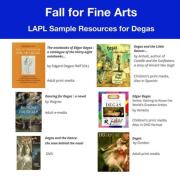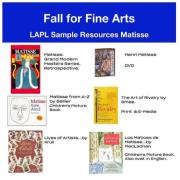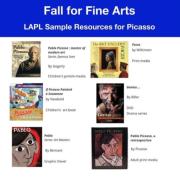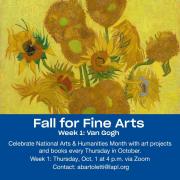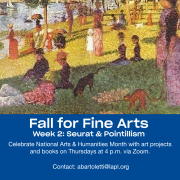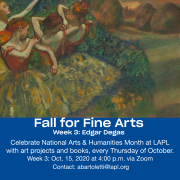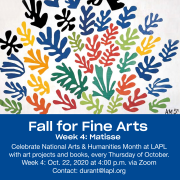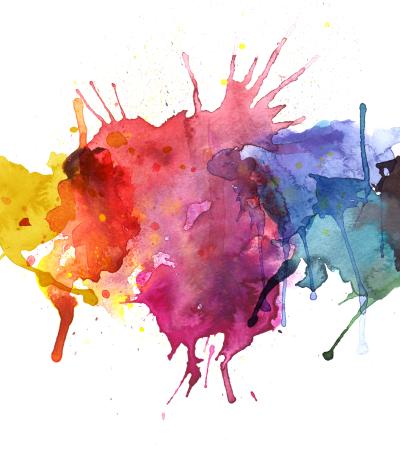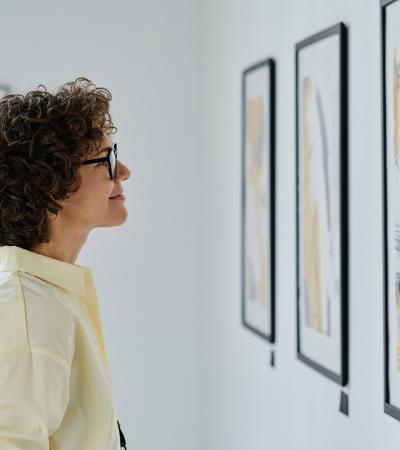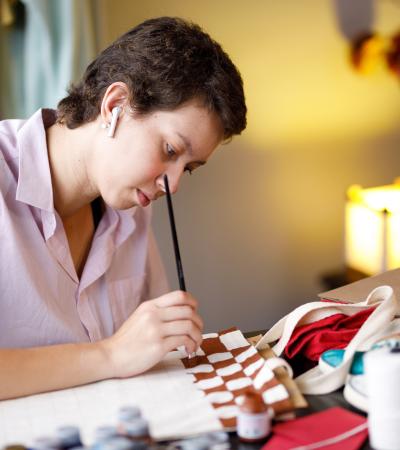For over six years before the pandemic, our branch offered successful hands-on arts/crafts/DIY programs for families on Thursdays at 4 p.m. During the pandemic, I continued these types of programs in innovative ways online.
One such program was Fall for Fine Arts, a series offered via Zoom every Thursday in October 2020 to celebrate National Arts and Humanities Month and LAPL’s Fall Traditions. While the program promoted certain library resources, it mainly exposed participants to engaging art techniques and famous art masters. In addition, submitted images of the art works created during the Zoom class were displayed on our Instagram site as mini art exhibits within this program.
Fall for Fine Arts connected the library to our community, nurtured and explored creative expression, and boosted morale and self-esteem. During these challenging times, art inspires, nurtures, brings people together, and art-making puts us in a moment of peace.
Advanced Planning
I got the idea for this program in August, while painting sunflowers in the style of Van Gogh. As October is National Arts and Humanities Month, I thought it would be great to teach families about a famous artist each week and engage in a related hands-on arts/craft project. For consistency with former programming, I wanted the series to take place on Thursdays at 4 p.m. For the five Thursdays in October 2020, these are the artists I selected and the related art projects I conceptualized for each:
Week 1: Van Gogh & Sunflower Drawings
Week 2: Seurat & Pointillism Paintings
Week 3: Degas & Ballerina Paper-Doll Chains
Week 4: Matisse & Shapes Collage Art
Week 5: Picasso & “Scary” Faces Mixed Media (for Halloween week)
My process included:
- Reserved the days and times on our shared Zoom account
- Submitted the program descriptions/Ad for posting on our library’s online Events Calendar; and other web sites.
- Created and posted different weekly flyers/ads, mainly on Instagram:
- For further promotion, I also created and posted weekly LAPL resource flyers/posters on our Instagram site:
- Formed collaborations and invited others to join me in teaching a session
- Researched the artists fully and structured all sessions
- Prepared brief, image-abundant PowerPoint presentations for each artist to start off the class, and shared related picture books
- Practiced and created the art examples for each week’s project to aid with teaching
- Registered participants and compiled mass email lists for future program notifications, current weekly reminders (i.e., supply lists)
- Allowed time for the maker portion of class
- Encouraged participants to share images of their artwork
- Organized and edited submitted images, if any, for posting mini art exhibitions on our Instagram site, thereby further promoting not only talents that boosted morale for all, but the event series as well. See:
Marketing
About two weeks prior to the commencement of the program on October 1, announcements of the event were posted on the main LAPL Events Page, several branches’ social media sites, the events page of the Los Angeles Department of Cultural Affairs, and a variety of local and national sites.
Mostly, three days before each Thursday event, I blasted on social media the announcement flyer and resource list, as well as images of the works participants created the week before.
In addition, I sent weekly email reminders to registered Zoom participants.
Budgeting
Free or low cost.
All art supplies were items that I already had available at home and that most people have or could easily get: pencils, crayons or paints, art brushes or even Q-tips, paper (regular and construction, colored and white, tissue paper, art paper/canvas), glue, scissors.
Also needed were devices and Internet connectivity.
Day-of-event Activity
Our team met up 30 minutes before each class to go over the agenda, practice sharing screens, check lighting, camera angles, sound, etc.
Most prep (creating PowerPoints and art examples, emailing weekly reminders, daily Instagram posts) happened in the weeks and days before the program.
Program Execution
We worked as a team. The teacher/librarian for that day could focus on the presentation and not worry about behind-the-scenes or technical issues, which the team handled.
Each class started with an introduction to the program series, a presentation about the artist, and a related booklist. Most of the hour was a time for creating together after the teacher/librarian showed example/s and demonstrated the activity steps.
We asked for cameras to be on during the program. Participants were muted when the teacher/librarian was reading or presenting. They unmuted themselves if they had questions. There was a lot of interaction on the screen, as step by step we asked the participants to show us their progress, or put a thumbs up if they were done with that step.
Families helped each other, and in every Zoom box there were two to five participants working together. Although the programs were intended for young children, all ages attended. Besides kids, tweens and parents enjoyed the classes and created their own art projects. We had a regular attendance of about 25 participants every week. Participants expressed gratitude and interest in future programs.
Advice
Besides Zoom knowledge, have high speed internet and good light, camera and sound.
Select your team based on what you saw them doing well in the past, or believe they can do.
Research and practice your topic and presentation thoroughly.
Though the program time is quickly over, realize that all the work you put in made a positive impact: families learned, connected, enjoyed and expressed themselves, increased their confidence and self-esteem, and were proud of their artwork being exhibited. An added plus is that parents also had a chance to be creative and get back in touch with the arts.

